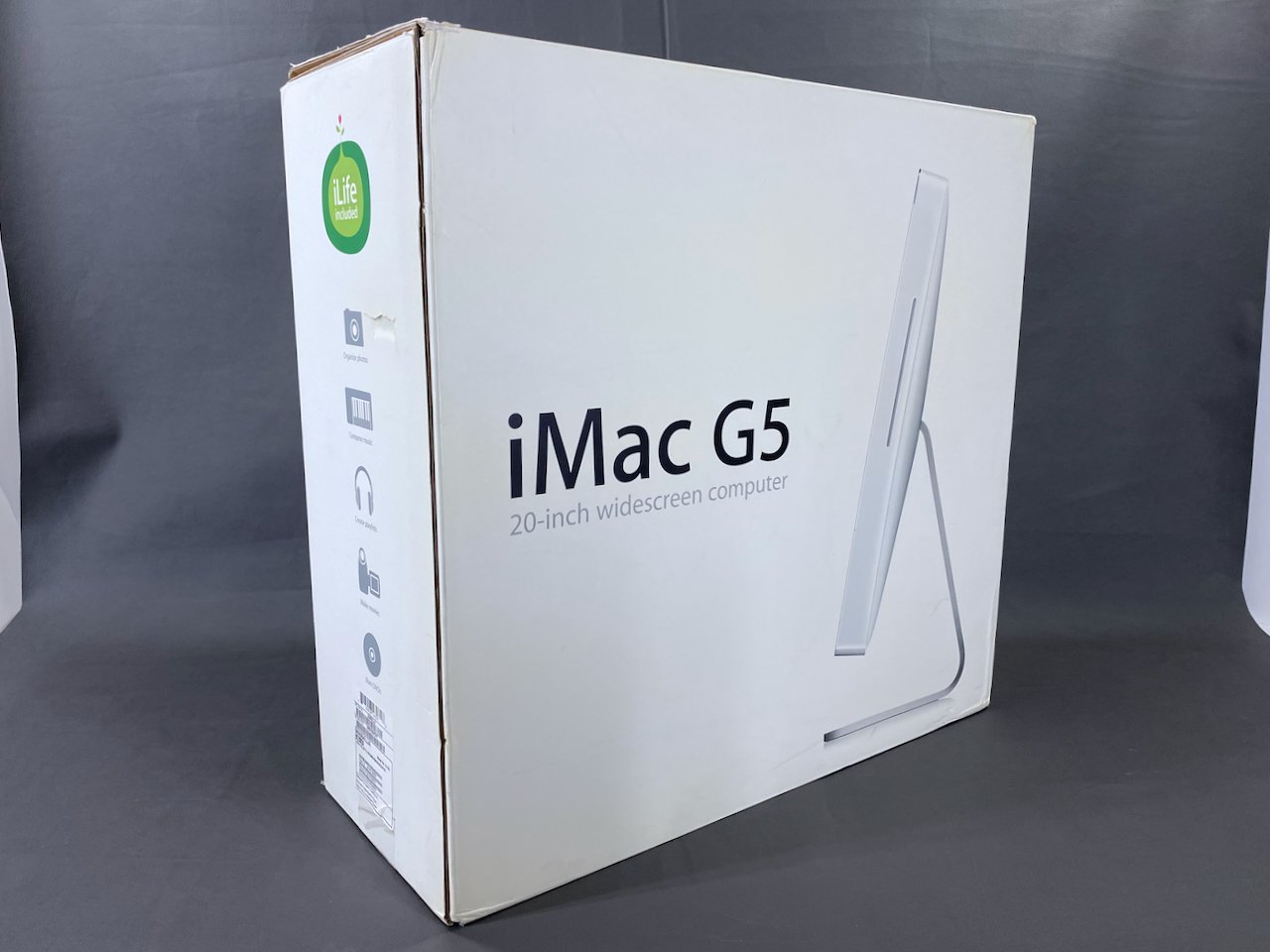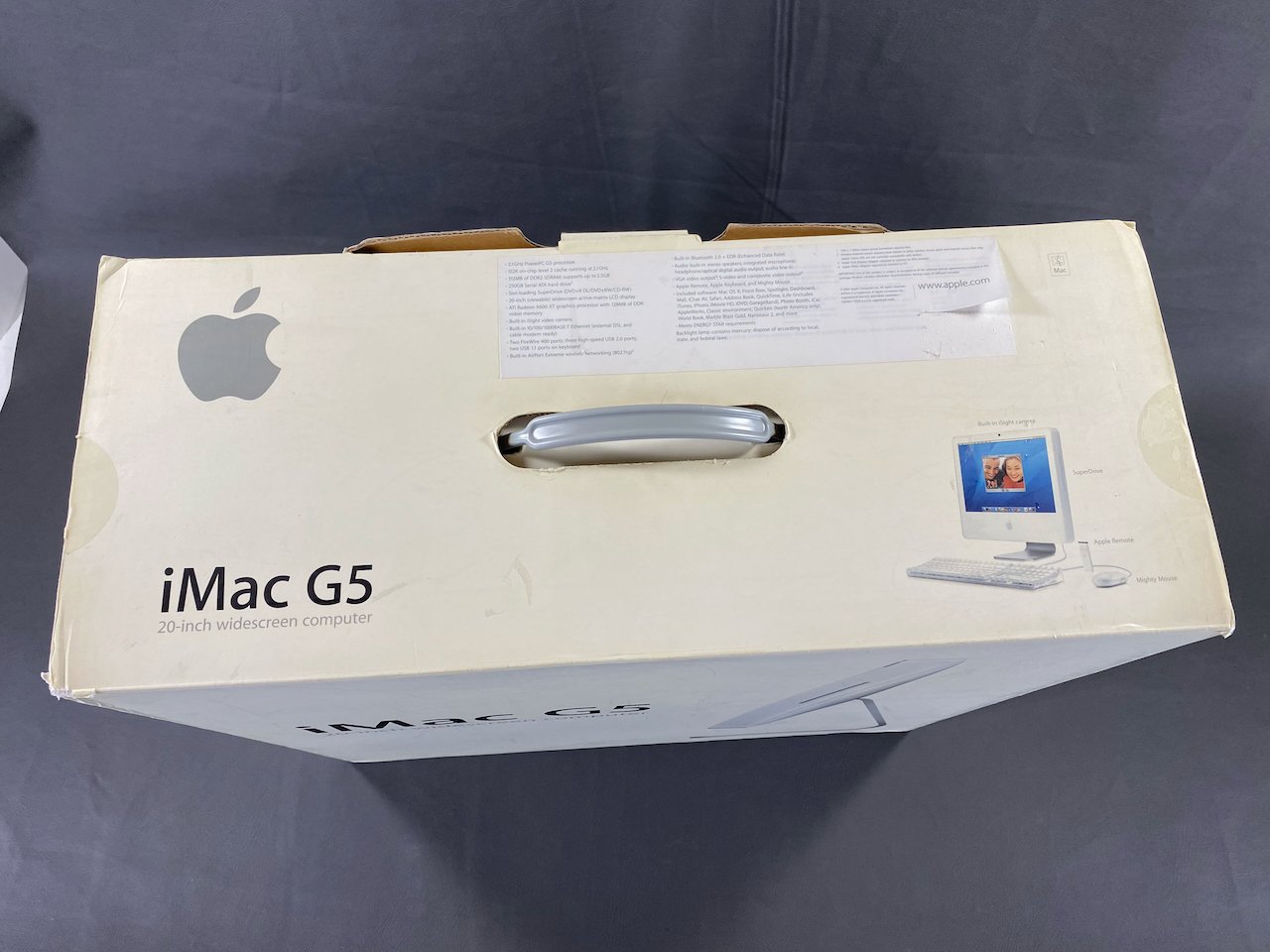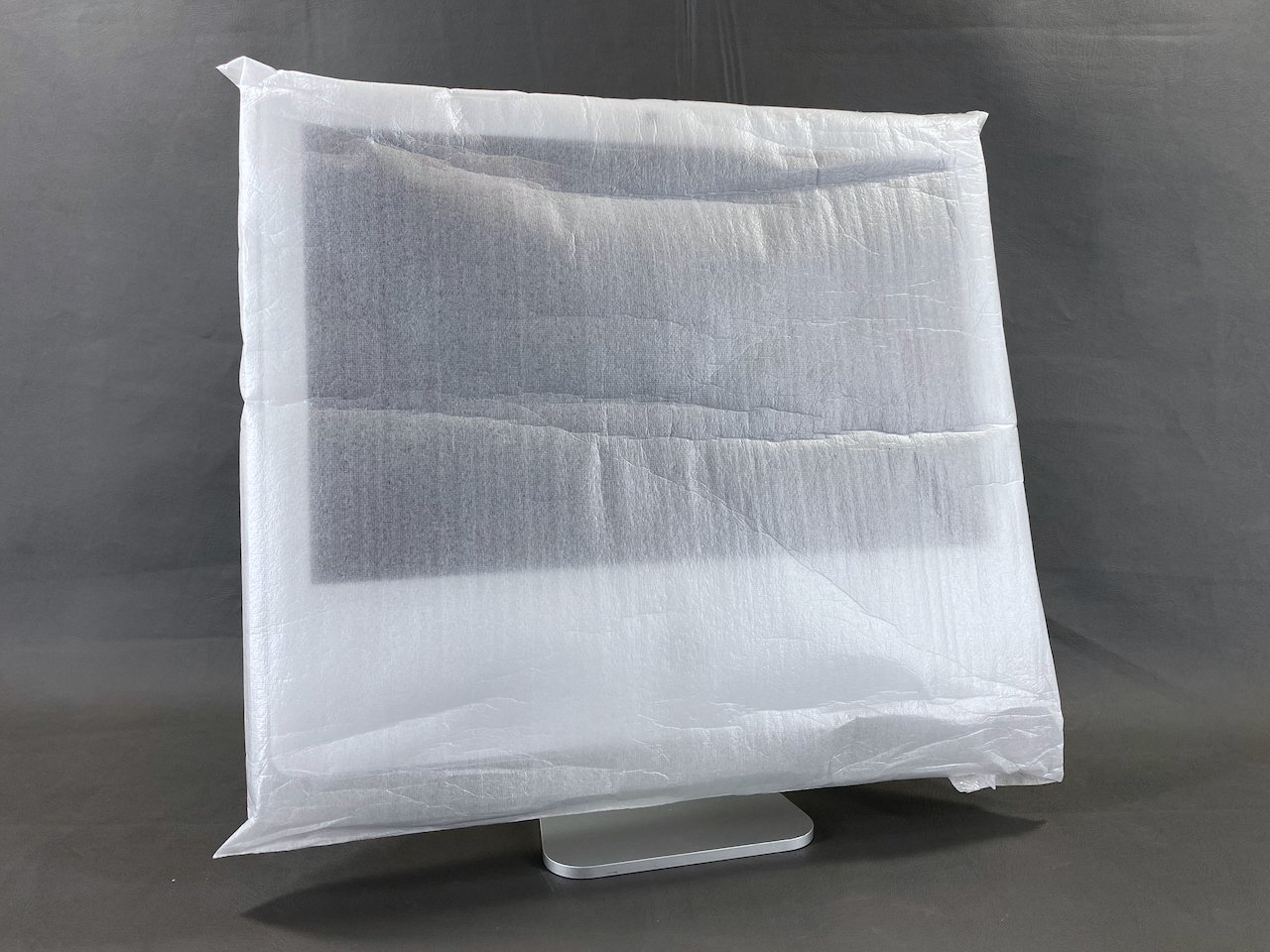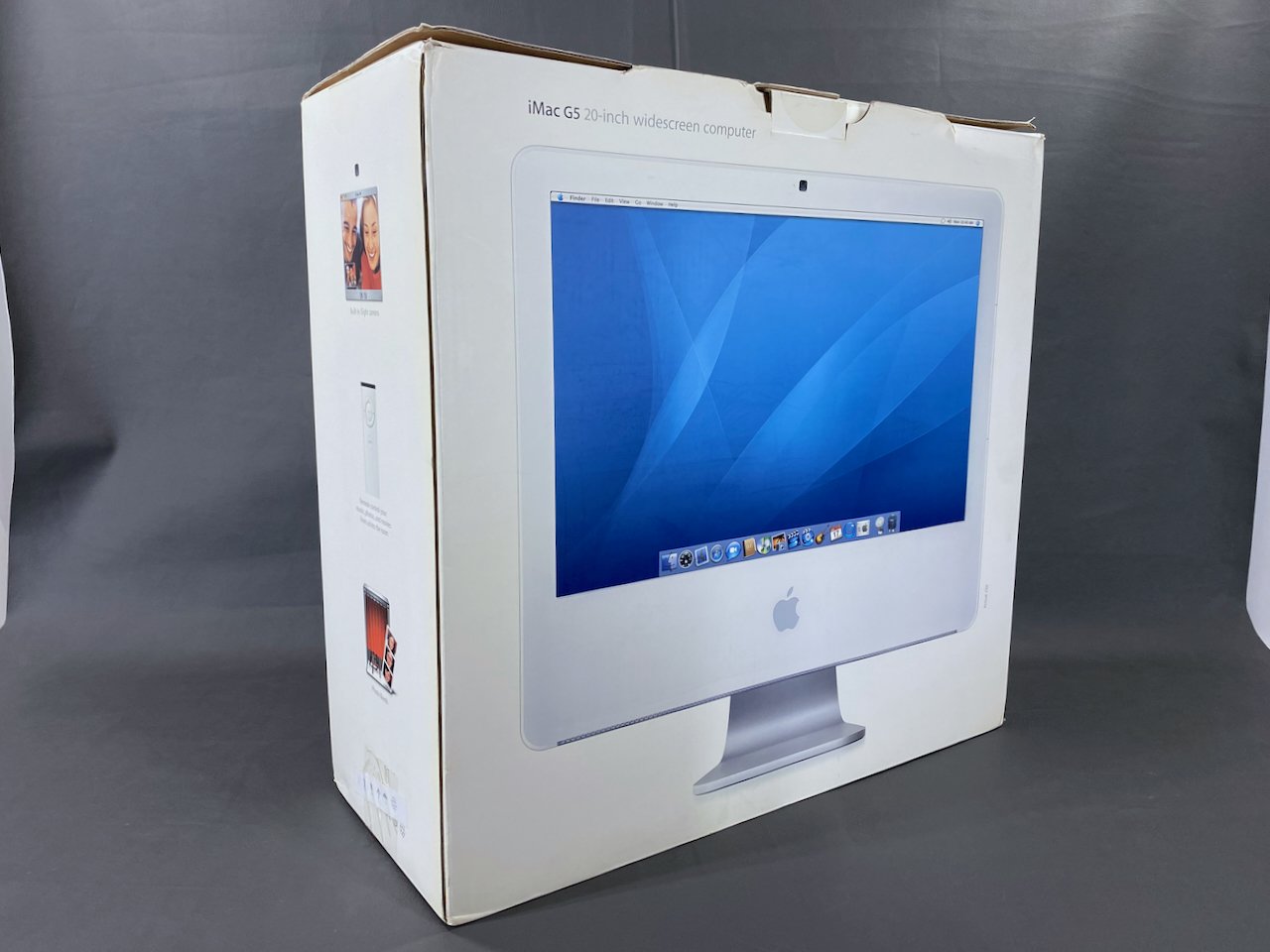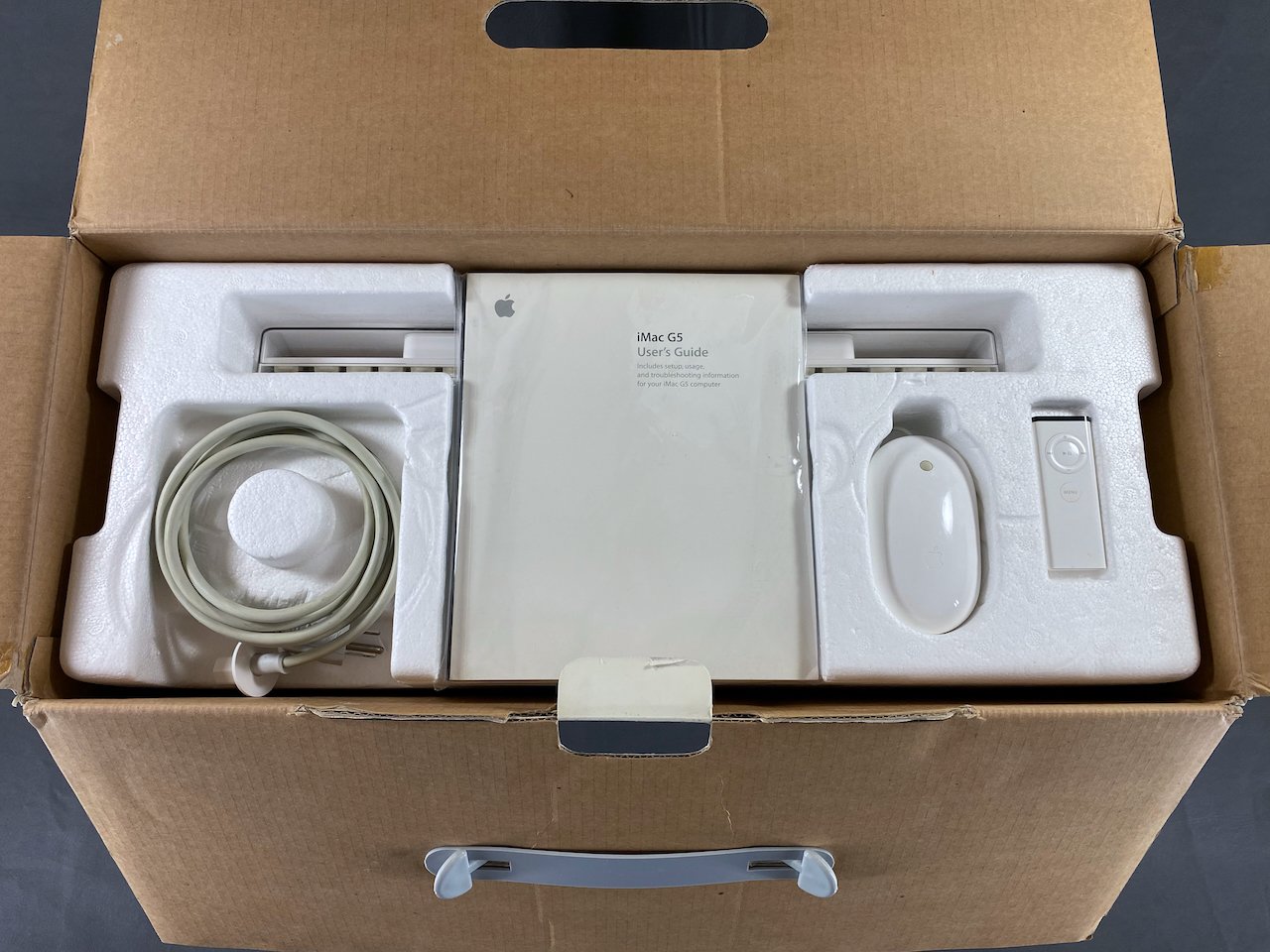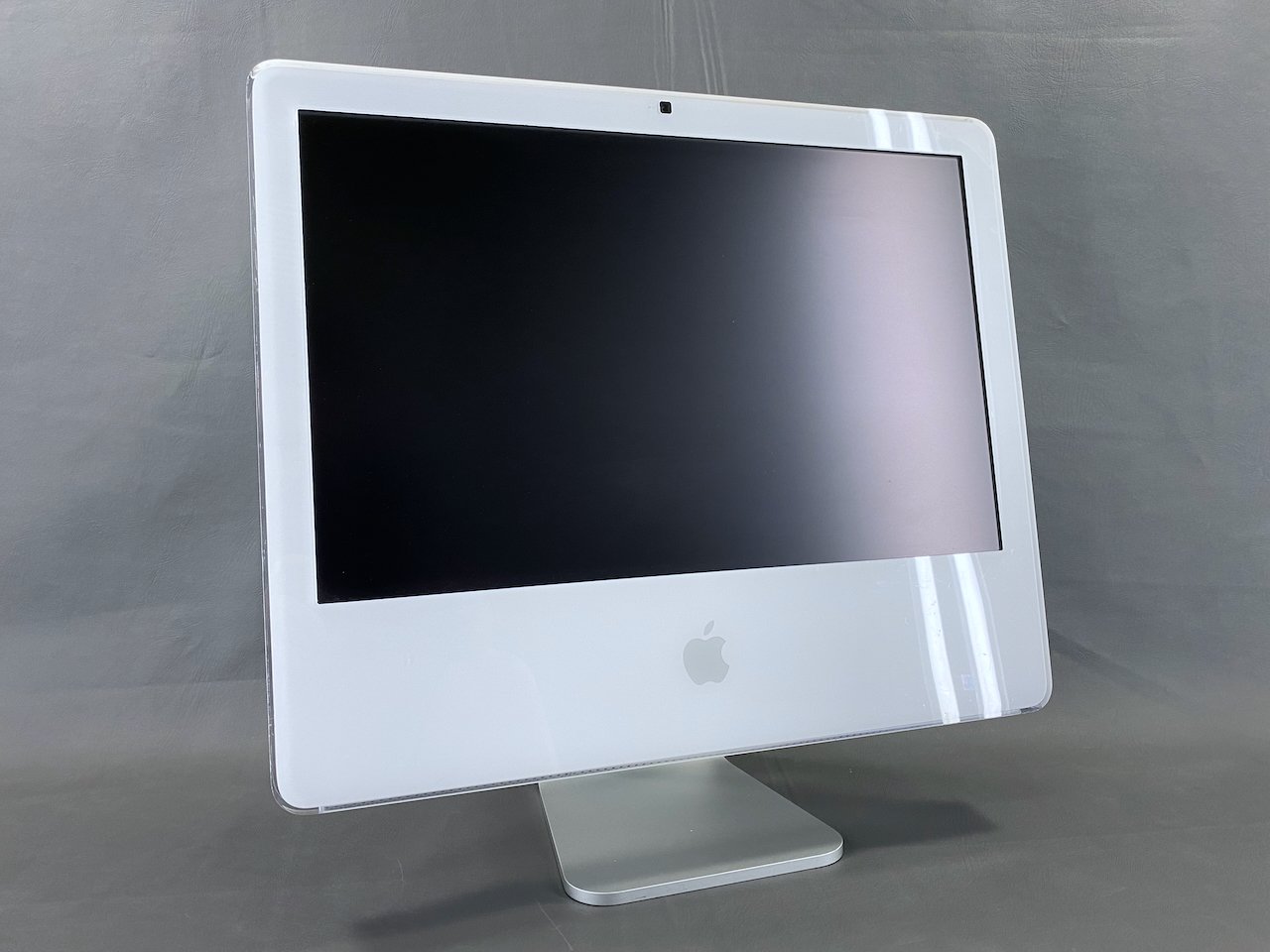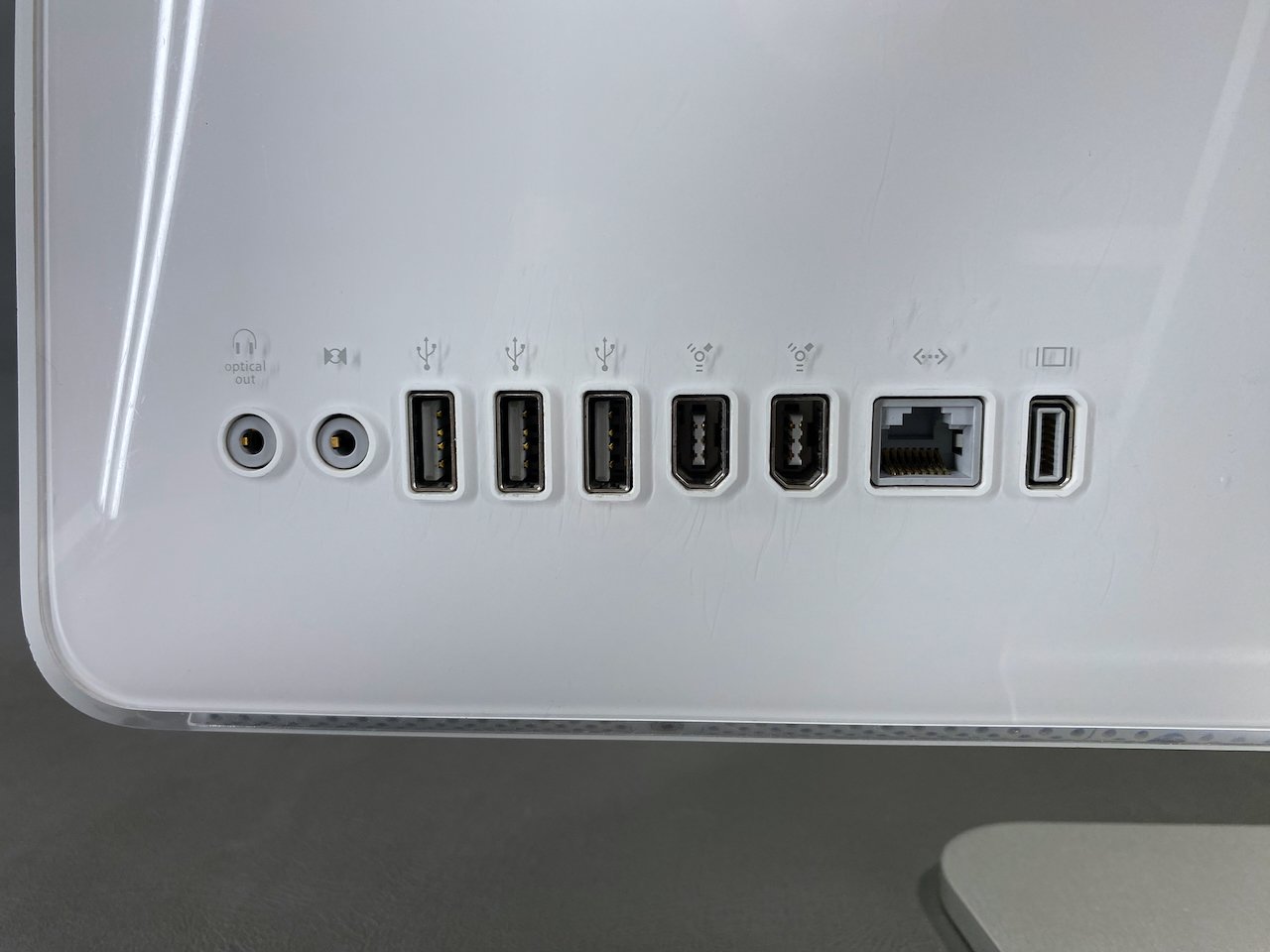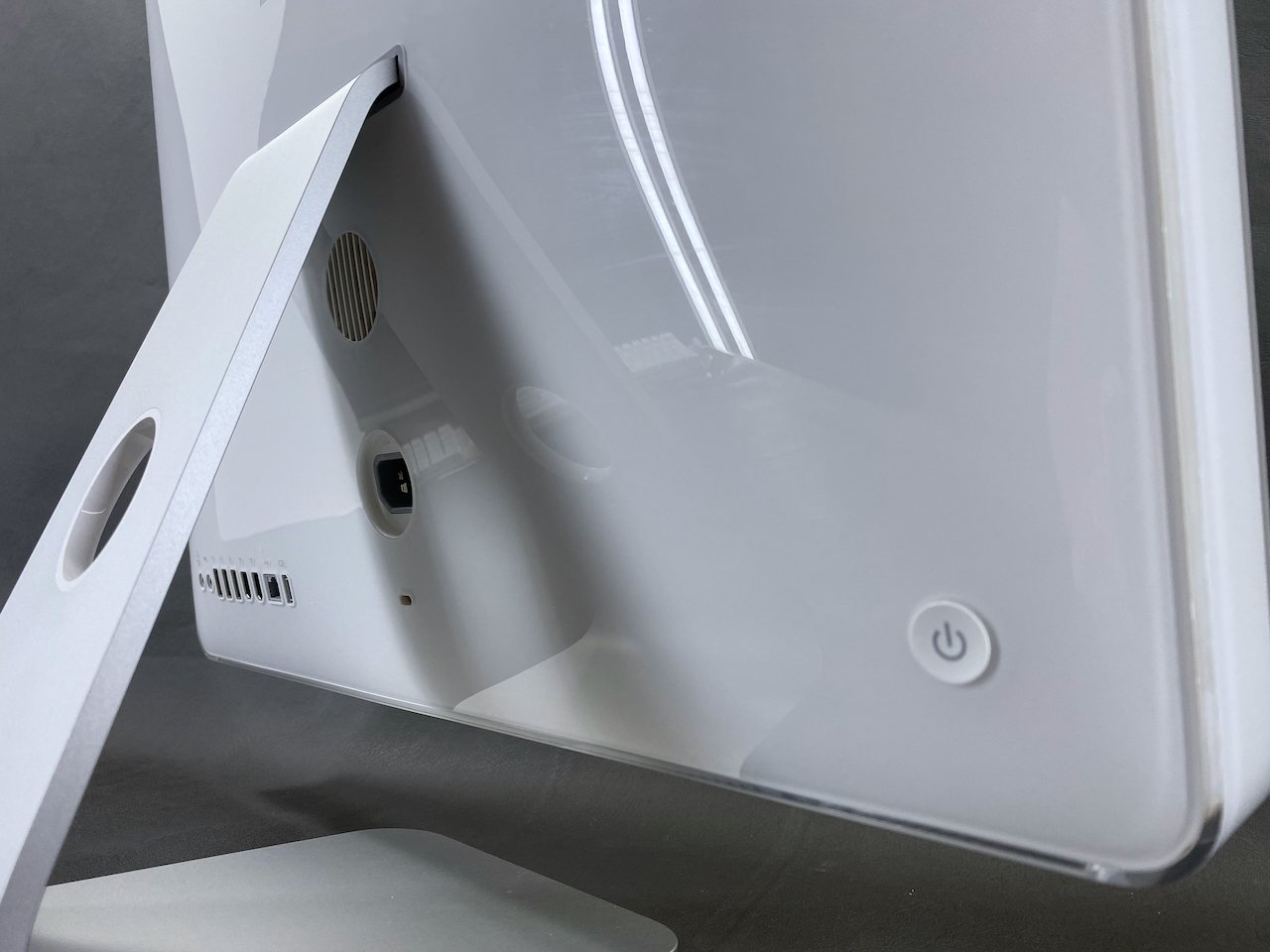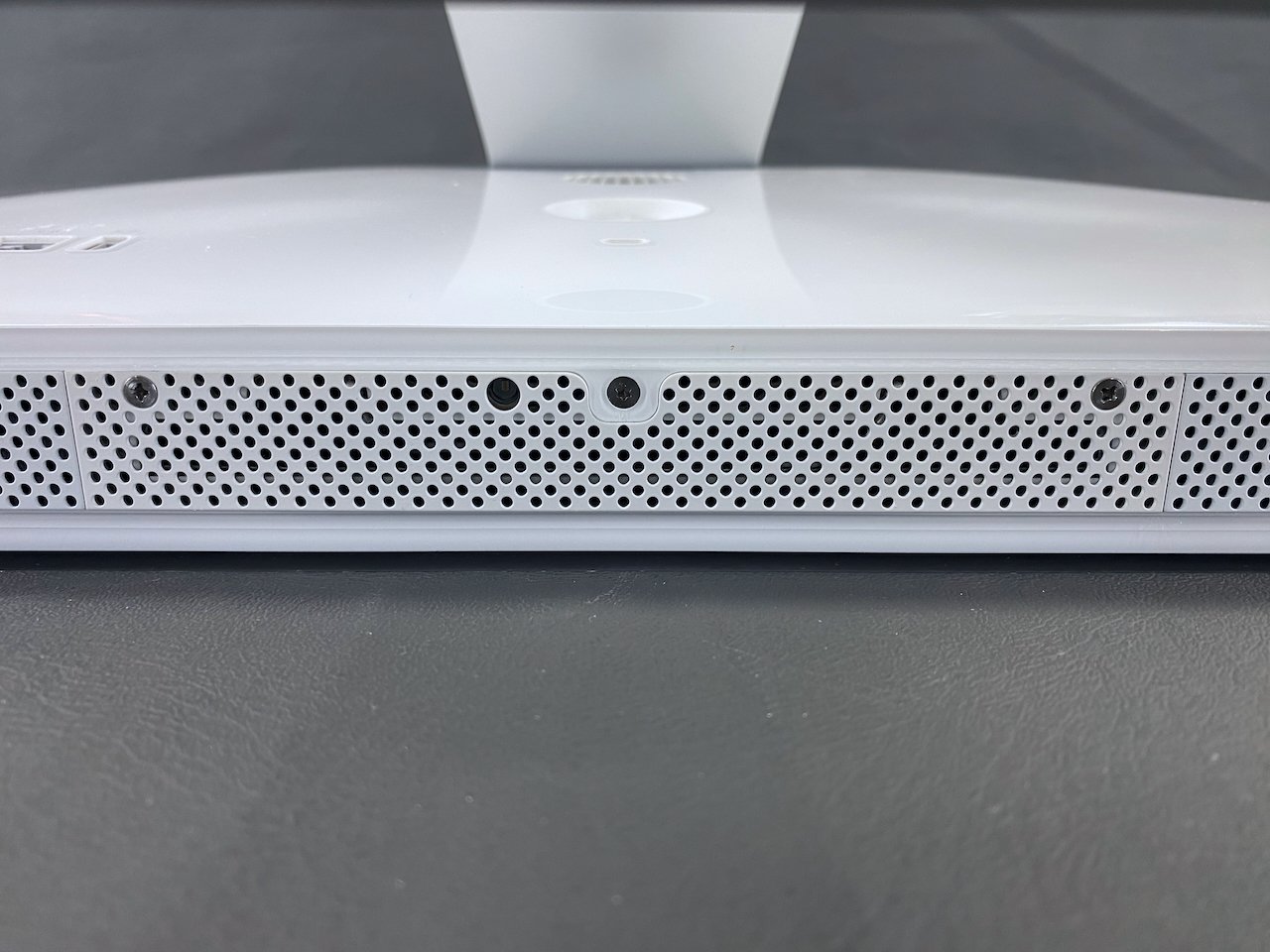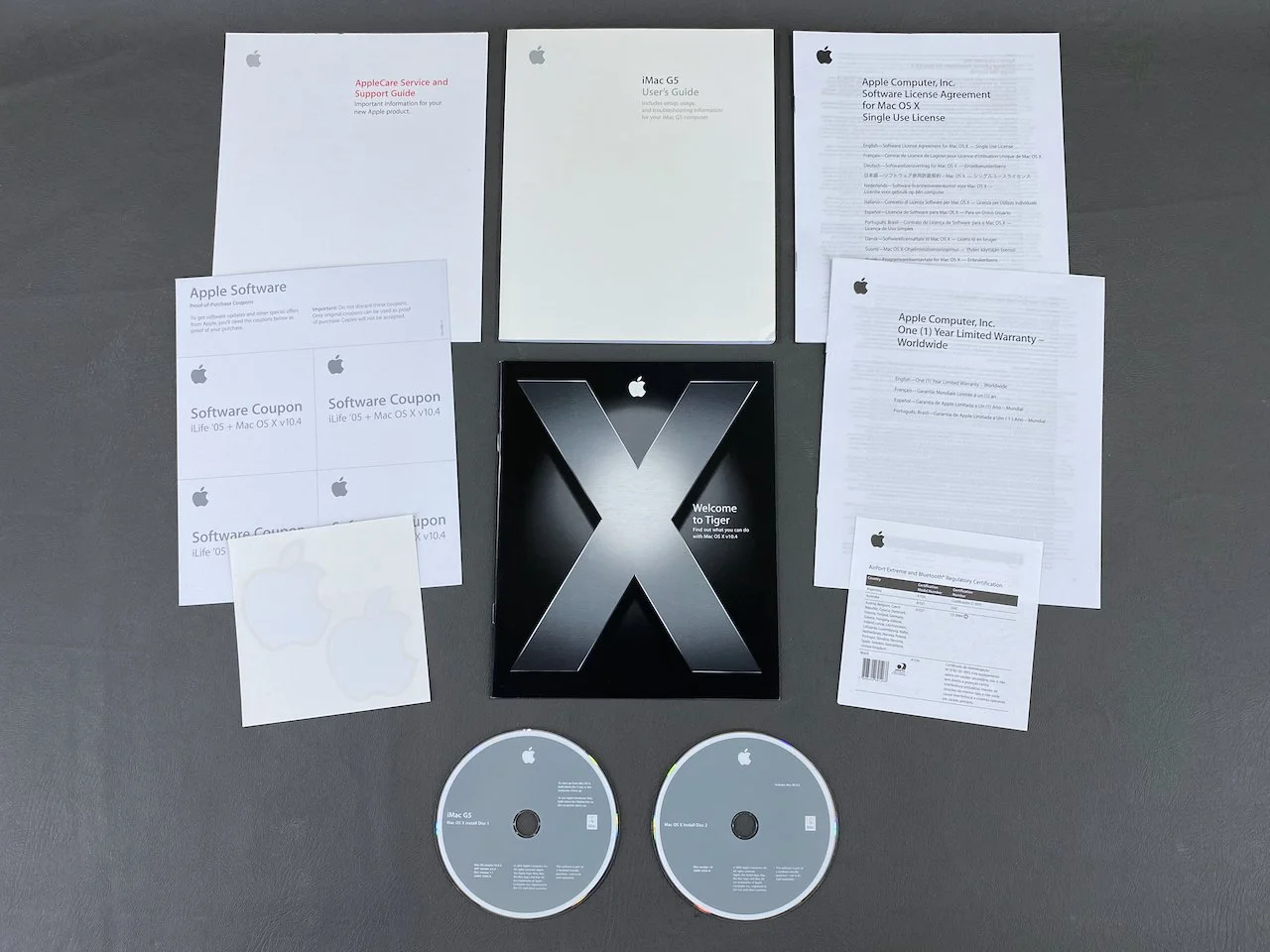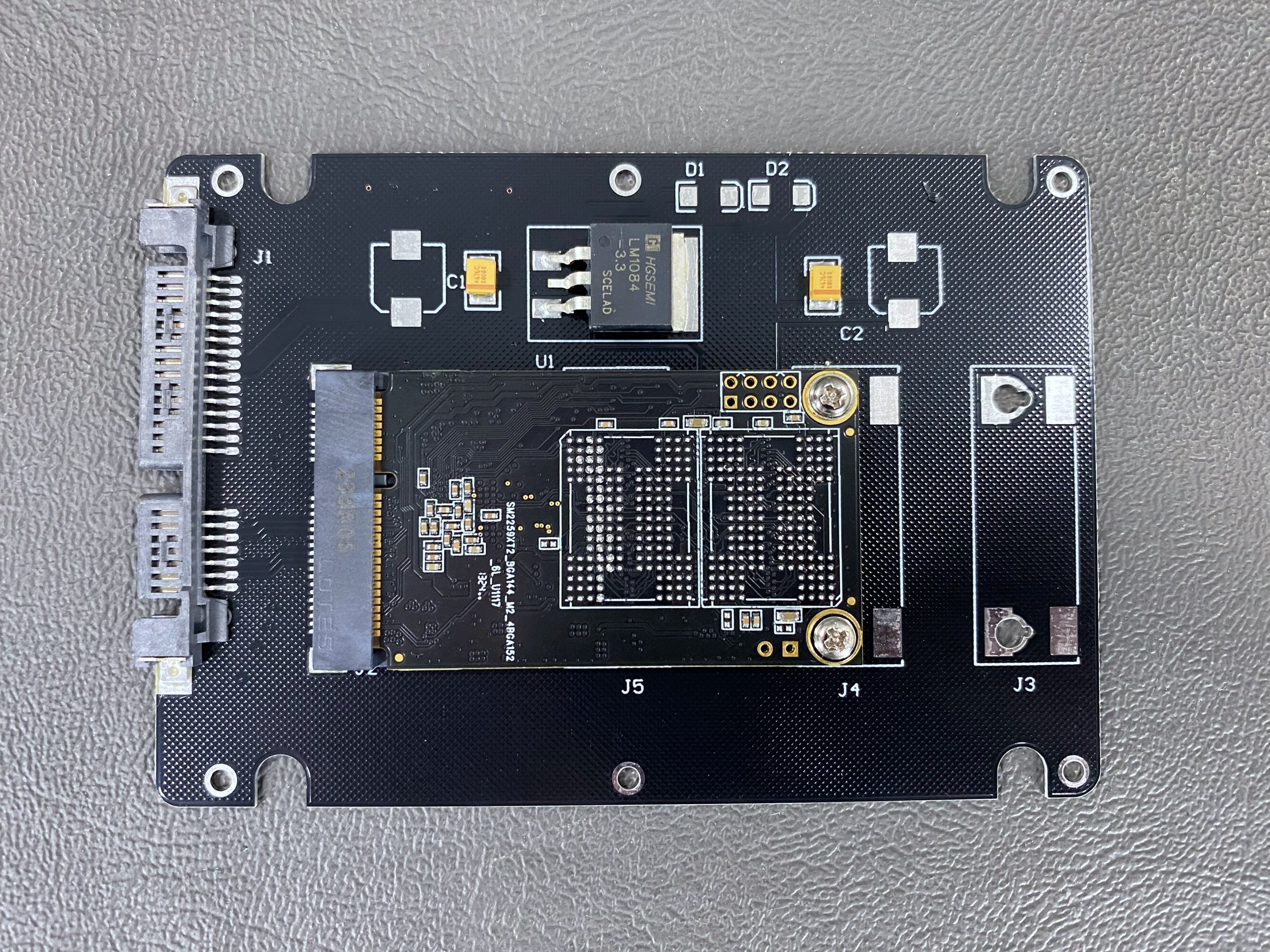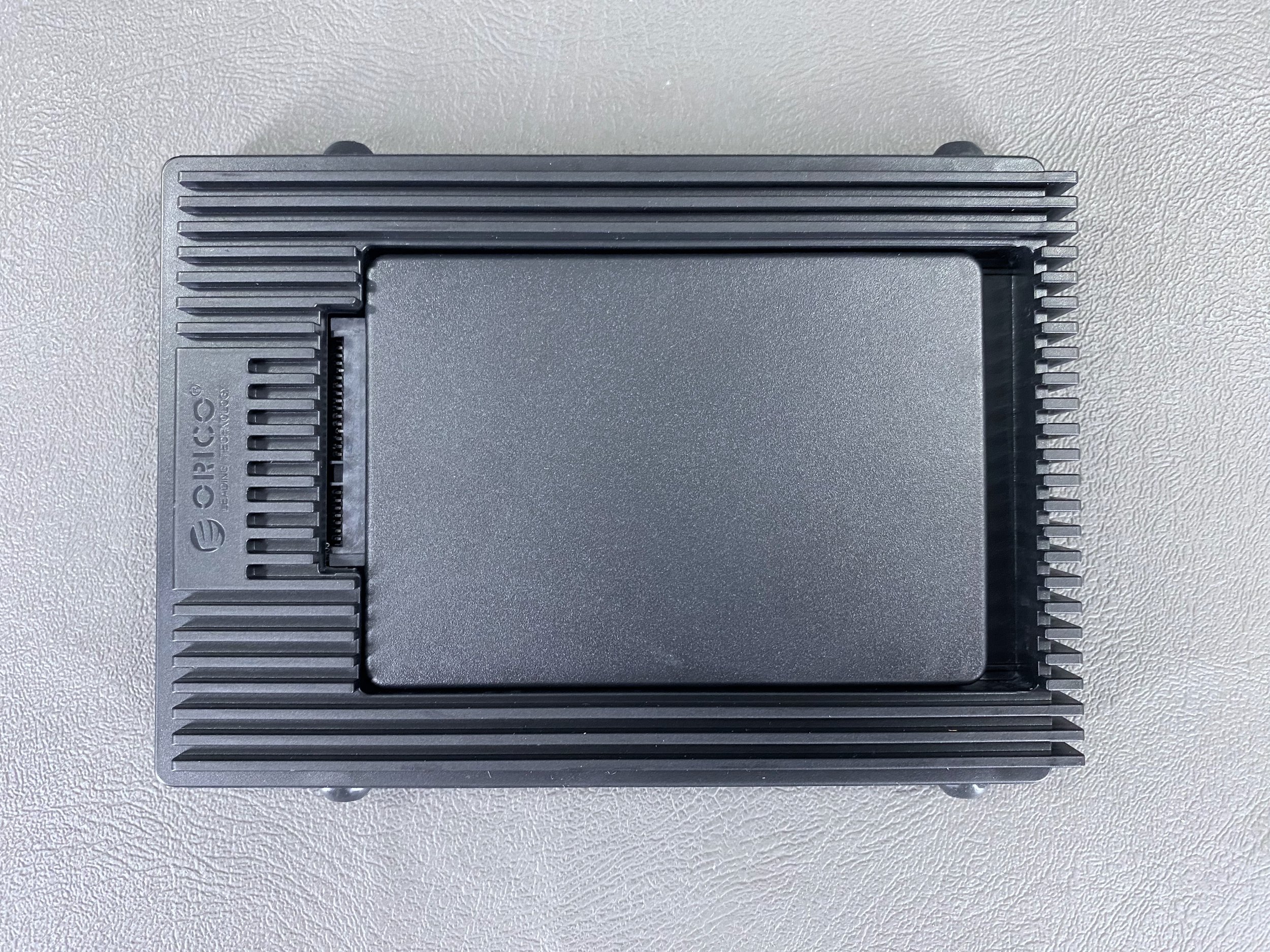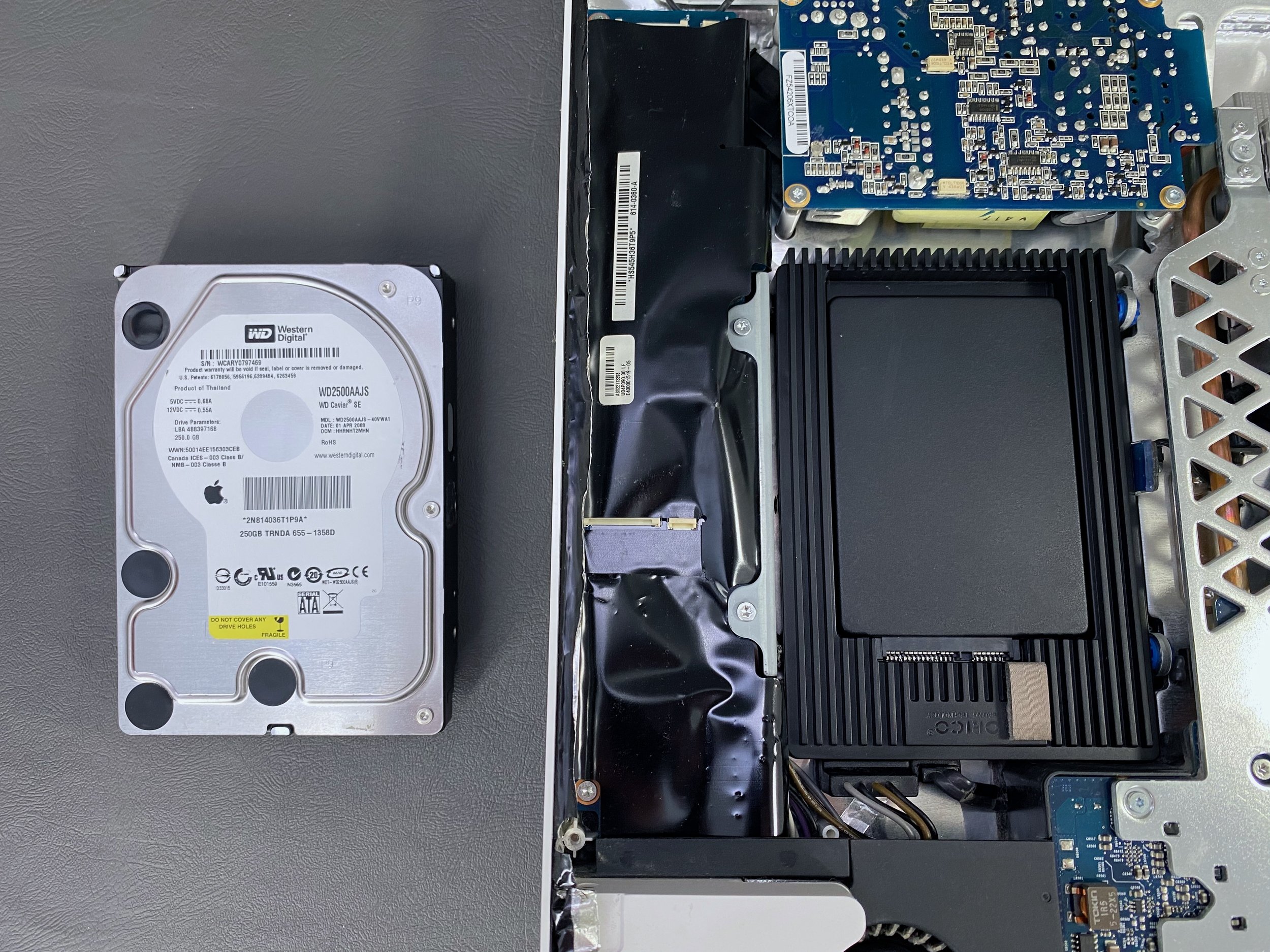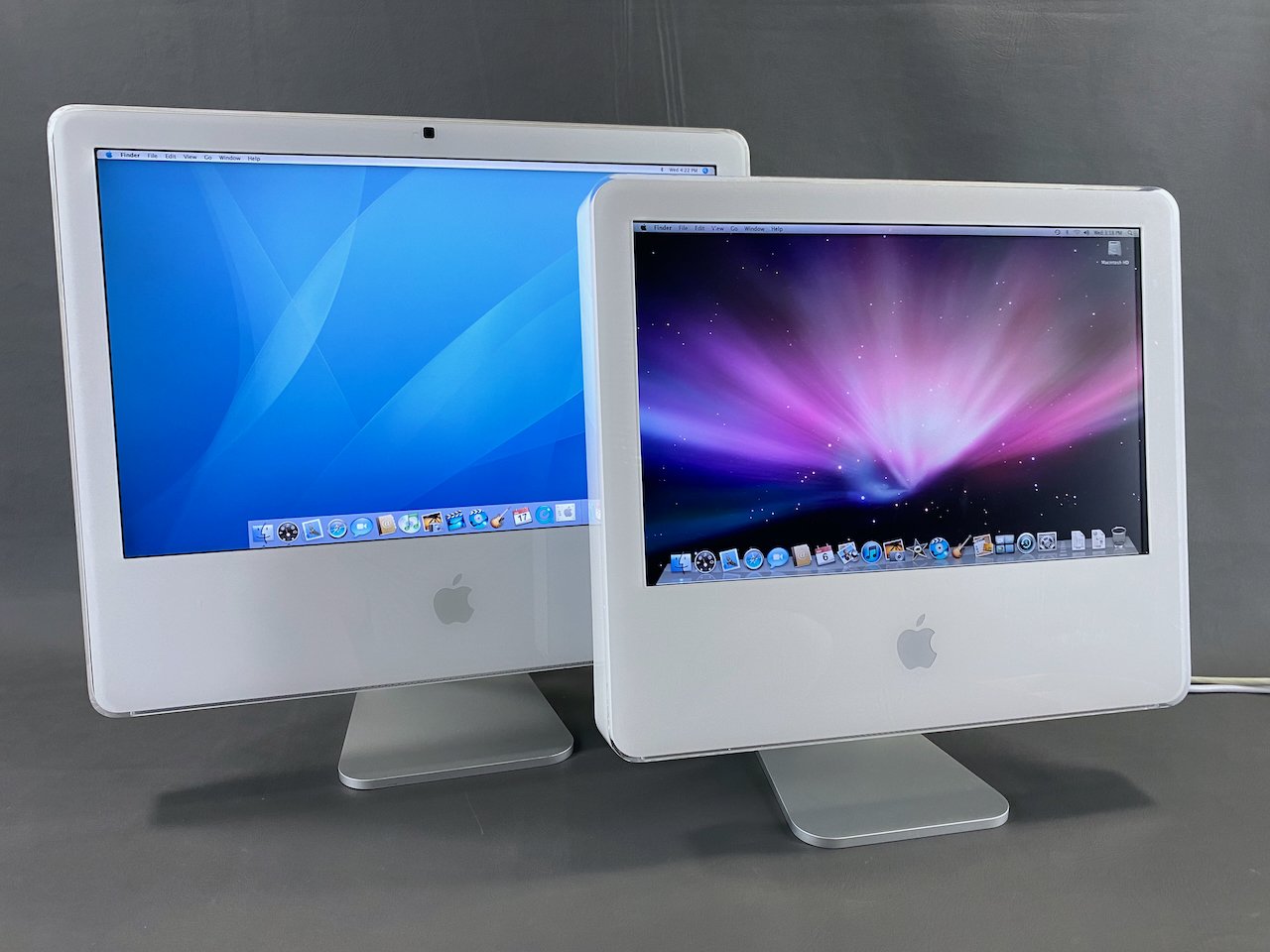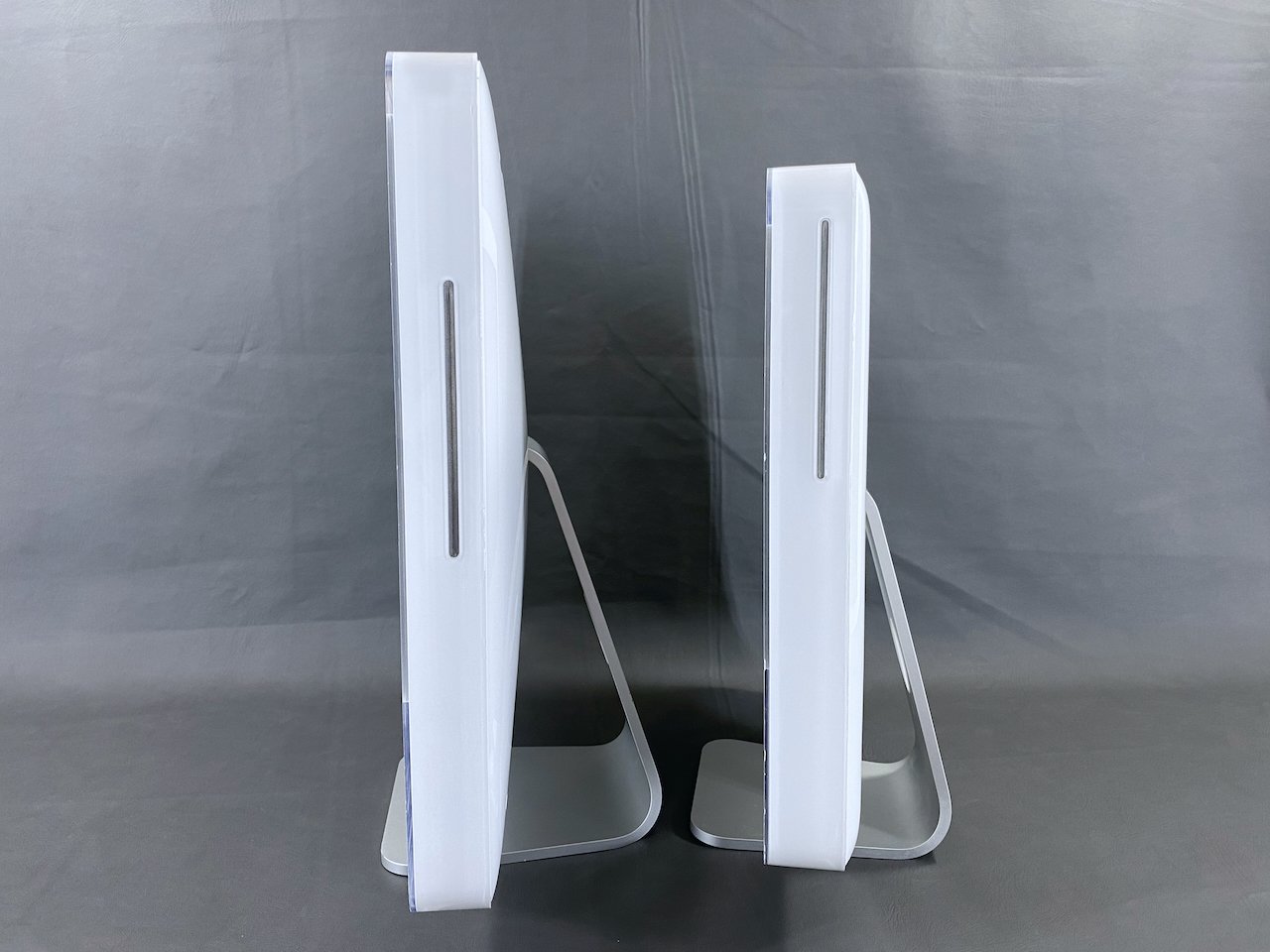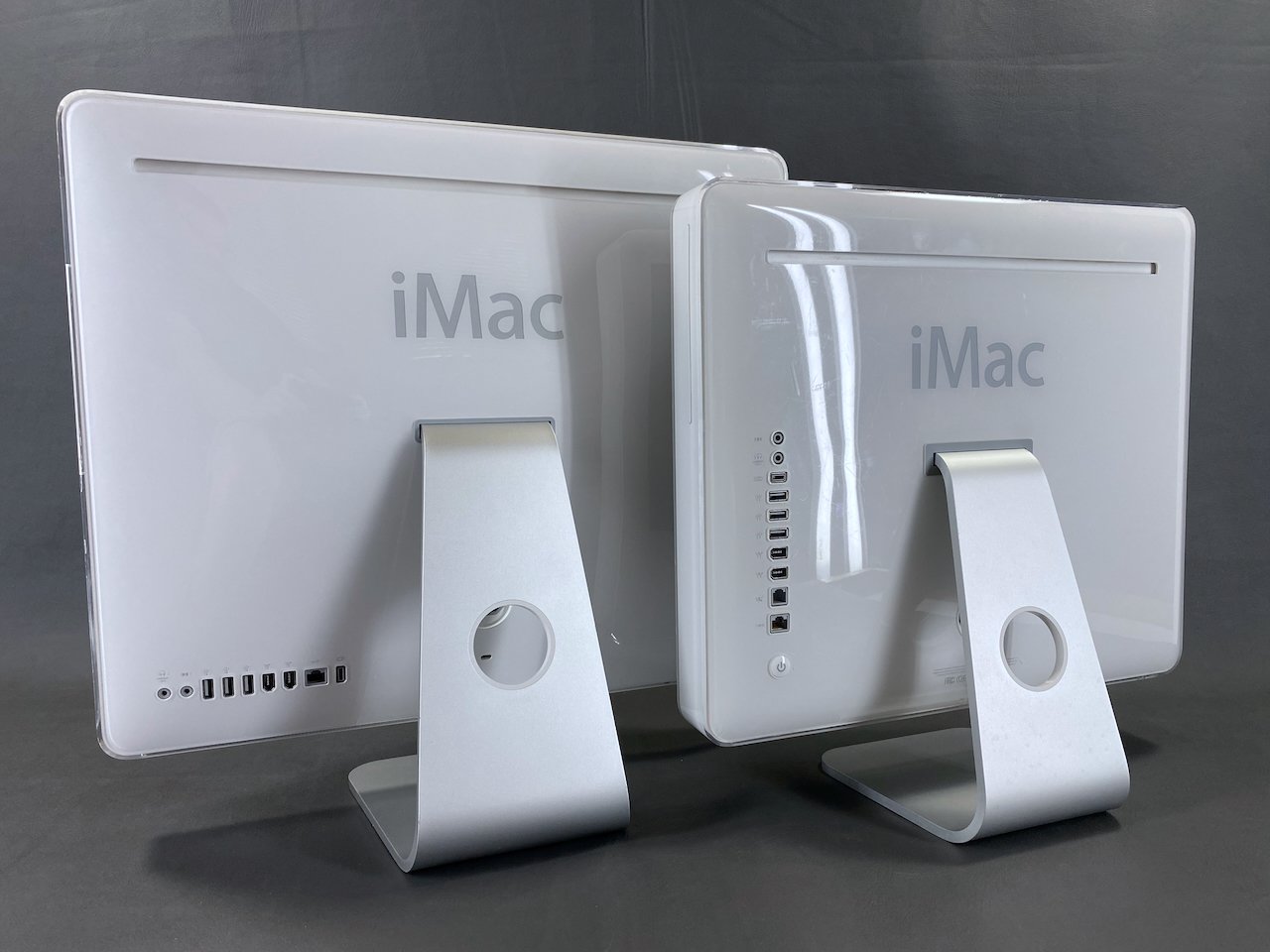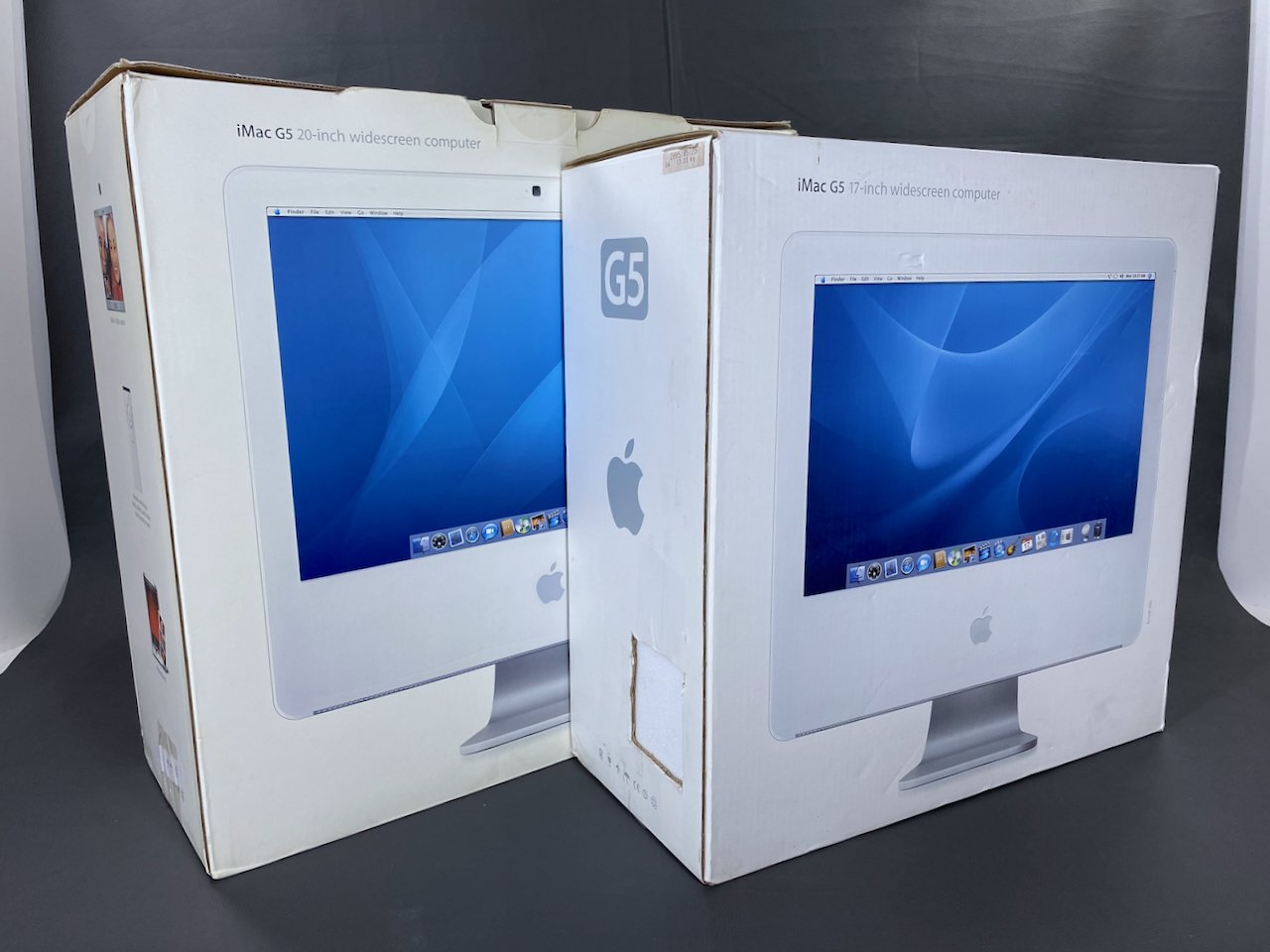iMac G5
20”
History
[specific to 20” model]
Introduced: August 31, 2004
Discontinued: January 10, 2006
Original Retail Price: $1,699
Model #: A1145
Tech Specs
Display: 20” TFT LCD
Processor: 2.1 GHz PowerPC G5
RAM: 2.5 GB (upgraded)
Hard Drive: 250 GB SSD (upgraded)
Optical Drive: SuperDrive (DVD-R / CD-RW)
OS: 10.4.2
Condition & Notes
This unit is in mint condition, and is complete with all the original packaging, power cable, remote control, keyboard, mouse, software CDs, and documentation.
This particular machine is the last and fastest PowerPC-based iMac ever made, with a 2.1 GHz G5 processor. Introduced in October 2005, it was only on sale for a few months before the introduction of the first Intel-based iMacs in January 2006. These final iMac G5s were also thinner, lighter, and used faster architectures than previous iMac G5 models. They also featured a built-in iSight camera above the display.
In 2024 I replaced the original 250 GB hard drive with an SSD. HDD to SSD conversion is a common technique used in vintage computer preservation, as the original hard drives are prone to failure due to age. This upgrade also makes the computer quieter, faster, and more reliable. Scroll to the bottom of the page for more on this.
It is in fully working order and is currently running Mac OS X 10.4.2.
Model Identifier
This particular machine is the 2.1 GHz model from late 2005, making it the last and fastest PowerPC-based iMac ever made.
Packaging
iMac
Unlike earlier iMac G5 models, the power button is on the rear left side and the I/O is arranged horizontally on the rear right side.
A label on the “foot” of the machine lists its serial number and technical specs. Also visible is the speaker and vent grille.
Also unlike earlier iMac G5s, there is a small fan grille tucked behind the aluminum stand above the power input jack.
Memory was designed to be user-upgradeable, and could be added behind this access door after unfastening a few screws.
The iMac up and running!
Accessories
Keyboard, mouse, power cable, remote control, documentation, and software CDs.
All the documentation and CDs spread out: User’s Guide, OS X Tiger guide, software coupons, software license agreement, warranty, regulatory, and AppleCare info, Apple stickers, and Mac OS X Install discs 1 and 2.
There is a magnet inside the lower-right side of the iMac’s case that can be used to attach the Apple Remote for easy access.
System Specs
mSATA SSD Installation
This upgrade makes the computer quieter, faster, and more reliable. I chose to install a 250 GB mSATA SSD using a 2.5” mSATA-to-SATA adapter housing and a 2.5” to 3.5” SATA adapter enclosure.
The 3.5” adapter with 2.5” assembly installed.
This SSD (right) was a direct plug-and-play replacement solution for the original HDD (left) using the original drive bracket and hardware.
The iMac G5s have a temperature sensor for the hard drive (seen here at center-right), which comes adhered to the drive itself in this model. It can just be pried off and re-attached to the new drive.
Comparison with mid-2005 17” iMac G5
My 17” iMac G5 is a mid-2005 model (second revision), whereas my 20” model is from late 2005 (third and final revision). Aside from the obvious difference in size and the iSight camera, these two revisions are very different other ways as well.
The 20” has the characteristic sloped rear design of the late 2005 models, whereas the earlier 17” has a completely flat back. The two machines are built completely differently: the flat-back models are disassembled by removing the rear panel with stand, whereas the curved-back (later) models are disassembled by first removing the front housing and display.
The power button is at right-rear on the 17”, but is located at left-rear on the 20”. The I/O layout is also completely different between the two. The 20” also has a small fan grille tucked behind the stand, which the 17” model does not have.
The packaging for the two revisions is somewhat different, although this image of the iMac is used on at least one side for both models.


